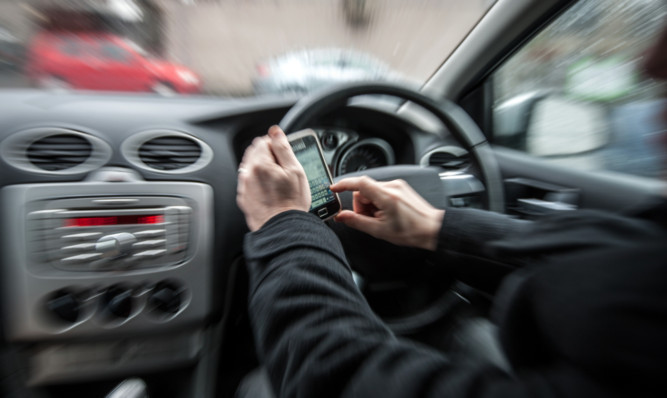A police chief has said he wants a purge on motorists using mobile phones while driving, after highlighting the “potential disaster” the practice can cause.
Chief Inspector Andy McCann, currently based at Perth Police HQ, told The Courier he backs a concerted targeting of drivers who deliberately flout the law by talking or texting on their phones, claiming some drivers are “addicted” to using them.
Mr McCann was speaking following a recent court case in Teesside, where a woman was jailed for three years for causing death by dangerous driving.
Susan Noble (29), of Armthorpe, Doncaster, had pled guilty to causing the death of a 25-year-old man in a collision on the A19 near Northallerton on December 27 2011.
The man had been standing behind a vehicle while a wheel was being changed when Noble’s car hit him.
North Yorkshire Police secured clear evidence that Noble had used her mobile phone to exchange text messages with a friend when the accident happened. She was jailed at Teesside Crown Court in January.
Mr McCann said this shocking case proved just how dangerous using a mobile phone is when driving.
He went on: “With regard to the court case in England, there’s no way the woman has gone out purposely to kill anyone, but the thing she has done unthinkingly by using her mobile phone has impaired her concentration. And because she is driving a tonne of metal, that (the collision) is the consequence.
“We need to make people get past that. We need to make people aware that they have their phones in their hand all the time and they need to get to the point where they are saying ‘I’m in the car now,’ so the phone goes away.
“This campaign will be a focus for us.”
He continued: “We’re not short of people that you can catch using a mobile when driving, but we will be alert to that through our campaigns. A tactic I was keen to employ was to publicise this in the media.
“We could say we will be focusing on mobile phones and on the first day we caught ‘X number’. If you had a longer campaign, hopefully you would see a reduced number, because that’s where we need to get to.
“People are addicted to their mobile phones these days, but do they realise how unsafe it is to use one when driving?” he went on.
“I think there are some studies that have shown that using a mobile phone is more dangerous than drink-driving because of the potential let’s face it, the potential for disaster.”
The Royal Society for the Prevention of Accidents has stated that drivers who use a mobile phone, whether hand-held or hands-free, are four times more likely to crash, injure or kill themselves and other people.
